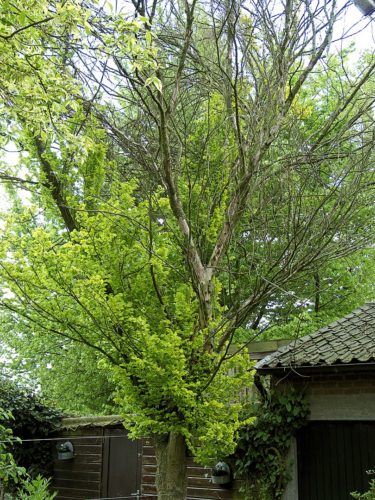Dut
Dut
The fungi are spread by the small and large elm bark beetle (Scolytus scolytus and S. multistriatus) and by root contact between trees standing together.
The beetle feed on the axillary buds of trees, infecting the tree with fungi. Once the trees are weakened by fungus, the beetles lay eggs in a tunnel under the bark.
Dut
Where to find
- Elm
- Dutch elm
- Golden Elm
- Zelkova
Control
Affected trees has to be cut down, debark and burned.
Prevention
Provide good growing conditions.
Plant resistant (less susceptible) varieties.

